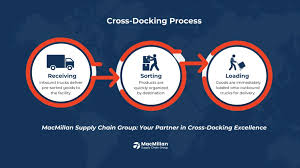Presently, speed, accuracy, and cost reductions have become of immense importance in the quick-paced commercial environment. As a result, businesses have started to re-evaluate their ways of handling their products for staying ahead in the race. Therefore, you may come across intelligent and faster technologies replacing traditional storage techniques. Here, the products would be restored for a few days or weeks. Cross-docking has become a popular choice of several companies. It helps them reduce delivery time, saves money, and streamlines logistics.
What Is Cross-Docking?
By managing items in a cross-docking manner, long-term storage is avoided. Instead of storing products in a warehouse, cross-docking allows them to be quickly transported from the receiving dock to the shipping dock. The items may be sorted and shipped in a few short hours.
Businesses that deal with large inventory numbers or require quick delivery will find this strategy ideal. Retailers, grocery stores, and internet sellers usually profit the most. Cross-docking reduces handling, lowers costs, and speeds up delivery.
The Two Main Types of Cross-Docking
There are two common ways to use cross-docking:
1. Pre-Distribution Cross-Docking
In this method, items are already assigned to customer orders before they arrive.
The items are promptly sorted and put into the appropriate delivery vehicles as soon as they arrive at the plant. For companies who have solid relationships with their suppliers and are well-aware of their needs, this is an excellent option.
2. Post-Distribution Cross-Docking
Here, goods are sorted after they arrive at the facility. This increases adaptability. Businesses who wish to wait and observe demand before placing orders will find it useful. It also allows companies to adjust shipping plans as needed.
Big Benefits of Cross-Docking
When done right, cross-docking can bring several strong benefits:
Lower Storage and Labor Costs
You do not need to store goods for long, so warehouse space and staff needs are reduced.
Faster Shipping
With no waiting in storage, orders can be shipped out quickly—sometimes the same day.
Better Inventory Turnover
Products move fast, helping businesses avoid overstocking and wasted space.
Reduced Loss or Damage
There are fewer chances for items to break or be lost when there are fewer touchpoints.
Are You a Good Fit for Cross-Docking?
Not all firms can profit from cross-docking, despite the fact that it sounds great. It fits well if:
You sell products that are ready to ship as-is
You can predict customer demand fairly well
You use tools that track inventory in real time
You get along well with shippers and suppliers
Retail, healthcare, and fast-moving consumer goods are some of the sectors that usually gain the most from this approach.
Do You Want to Know More?
Once you get started, cross-docking is much more. Every step counts, from selecting the appropriate partners to putting up the proper processes. A thorough cross-docking guide may help you look at real-world examples, expert advice, and simple steps to get started.
Final Thoughts
Cross-docking goes beyond a passing trend. It is a clever and easy method to enhance the flow of items through your company. It may save money, reduce waste, and expedite deliveries. Cross-docking is one of the clever solutions that might provide your business the competitive edge it needs in an era where consumer expectations are greater than ever.







